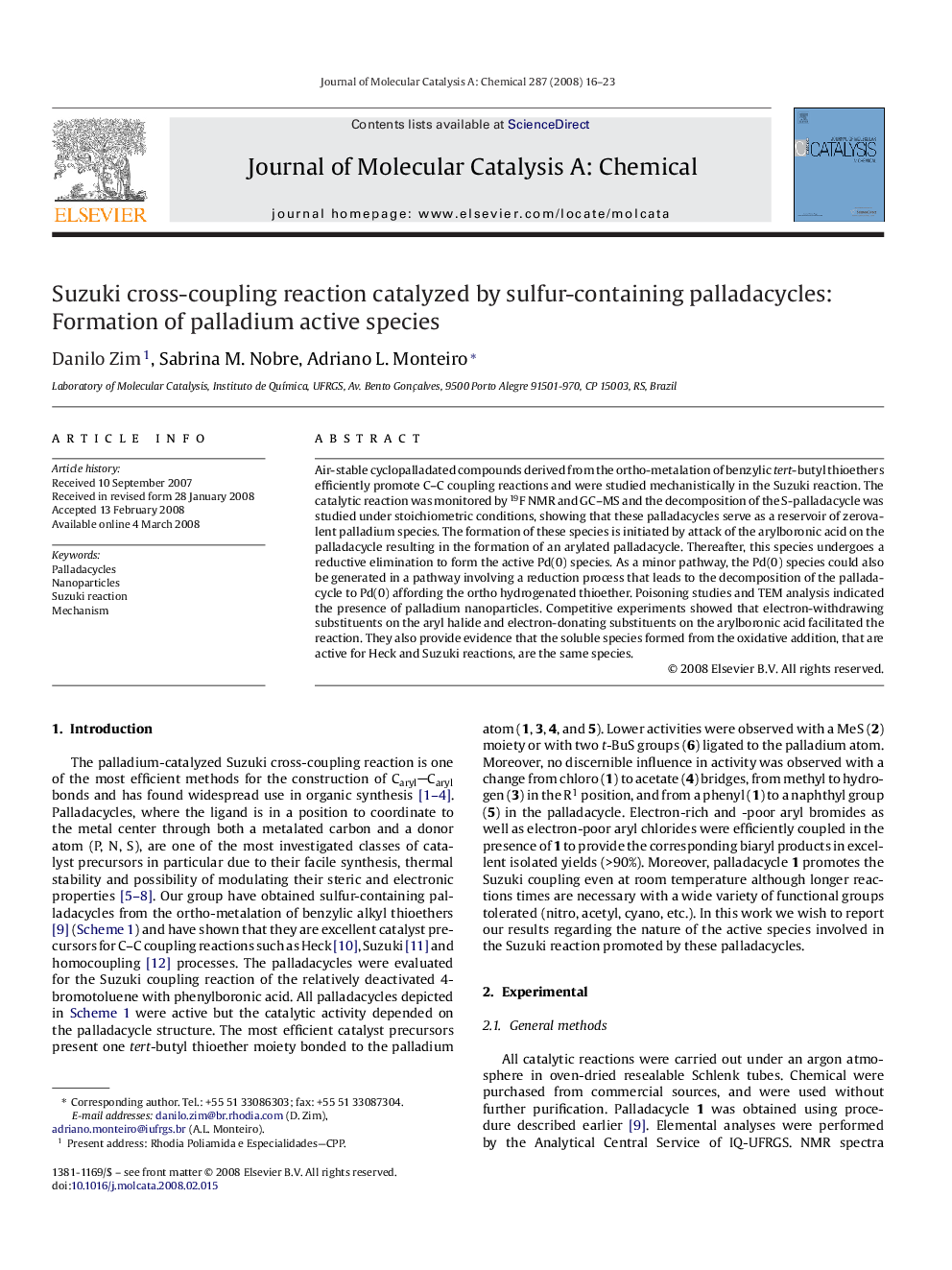| کد مقاله | کد نشریه | سال انتشار | مقاله انگلیسی | نسخه تمام متن |
|---|---|---|---|---|
| 67338 | 48478 | 2008 | 8 صفحه PDF | دانلود رایگان |

Air-stable cyclopalladated compounds derived from the ortho-metalation of benzylic tert-butyl thioethers efficiently promote C–C coupling reactions and were studied mechanistically in the Suzuki reaction. The catalytic reaction was monitored by 19F NMR and GC–MS and the decomposition of the S-palladacycle was studied under stoichiometric conditions, showing that these palladacycles serve as a reservoir of zerovalent palladium species. The formation of these species is initiated by attack of the arylboronic acid on the palladacycle resulting in the formation of an arylated palladacycle. Thereafter, this species undergoes a reductive elimination to form the active Pd(0) species. As a minor pathway, the Pd(0) species could also be generated in a pathway involving a reduction process that leads to the decomposition of the palladacycle to Pd(0) affording the ortho hydrogenated thioether. Poisoning studies and TEM analysis indicated the presence of palladium nanoparticles. Competitive experiments showed that electron-withdrawing substituents on the aryl halide and electron-donating substituents on the arylboronic acid facilitated the reaction. They also provide evidence that the soluble species formed from the oxidative addition, that are active for Heck and Suzuki reactions, are the same species.
Sulfur-containing palladacycles were studied mechanistically in the Suzuki reaction. The catalytic reaction was monitored by 19F NMR and GC–MS and the decomposition of the S-palladacycle was studied under stoichiometric conditions, showing that these palladacycles served as a reservoir of zerovalent palladium species. Poisoning studies and transmission electron microscopy analysis results indicated the presence of small palladium nanoparticles (3.3 ± 0.8 nm). Competitive experiments provide evidence that sulfur-containing palladacycle and PdCl2(SEt2)2 form the same active species in the oxidative addition step in Suzuki reactions and that these species are equivalent to those for the Heck reaction using the same palladacycle.Figure optionsDownload as PowerPoint slide
Journal: Journal of Molecular Catalysis A: Chemical - Volume 287, Issues 1–2, 15 May 2008, Pages 16–23